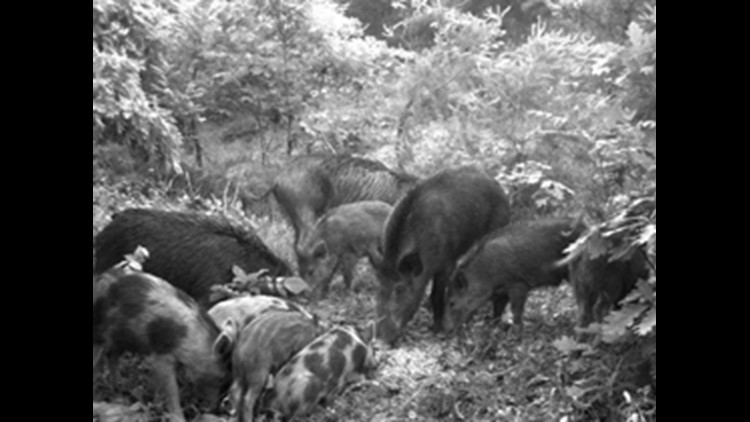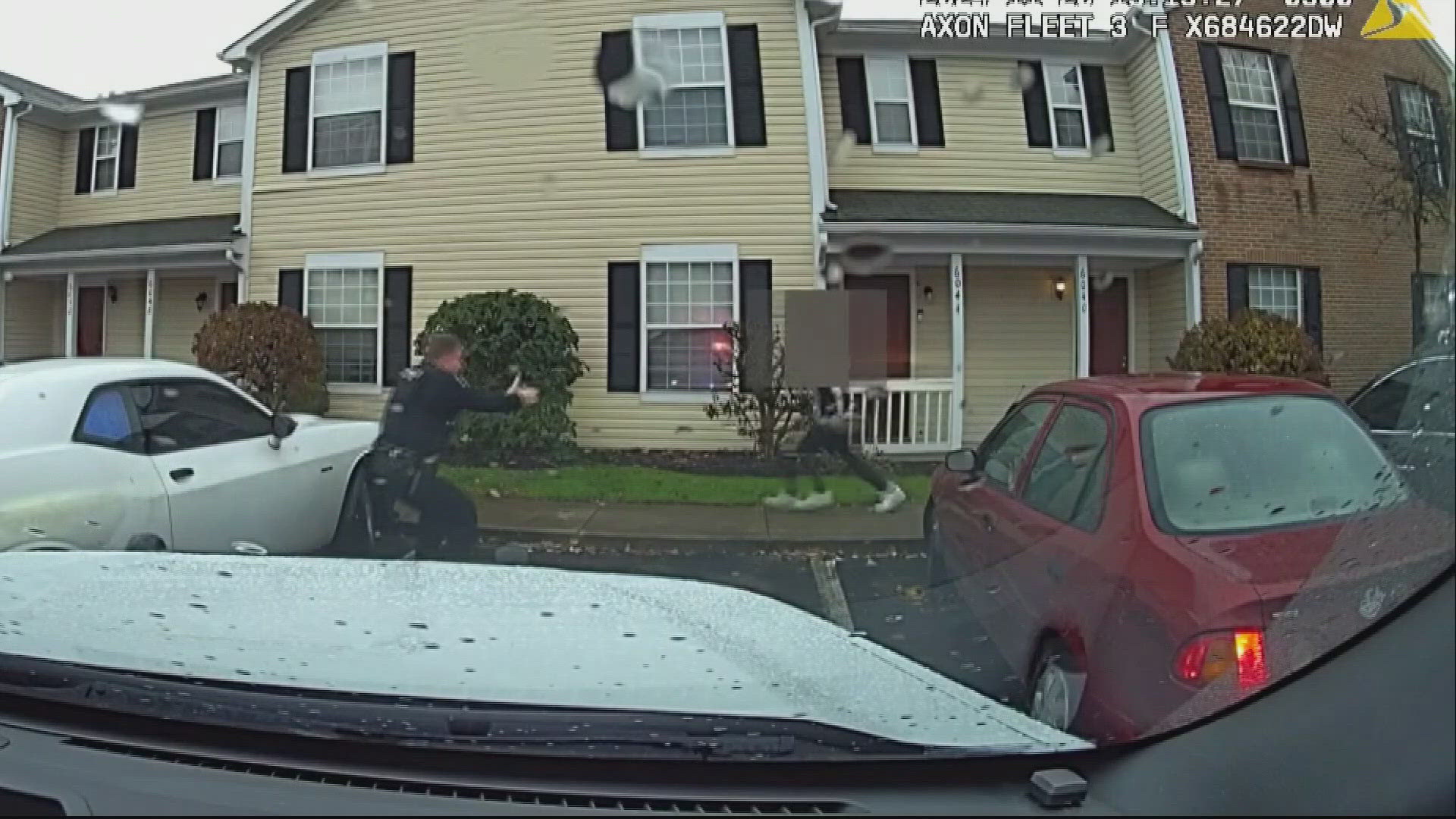One of the most destructive pests is quickly spreading through central Ohio, getting closerto Columbus.
The animals are causing damage and putting up a fight for the wildlife biologists trying tocontrol them, 10TV's Kurt Ludlow reported on Thursday.
Armed with a machete and a tracker's eye, U.S. Department of Agriculture Wildlife BiologistCraig Hicks goes on the hunt for one the most unwanted and destructive creatures on four legs.
SLIDESHOW: Images From Report
"Russian boar, piney woods rooter, razorback, feral hog, feral swine, pig," Hicks said. ""Evenone hog, having one hog running around in Ohio's landscape is bad. They cause a lot ofdestruction, a lot of damage and a lot of disease concerns."
No matter what you call it, wild boars have invaded Ohio and wildlife officials say they havegot to go.
No one knows how many wild hogs are in Ohio, Ludlow reported. Some simply escaped confinement,but others were illegally released in order to be hunted.
So far they have been spotted in at least two dozen counties, often in some of the roughestterrain Ohio has to offer.
"The thing is, there are plenty of hogs out here," Hicks said. "But as you can see you've got toget off the road to find them."
We recently went on a daytime hunt in Gallia County.
"They should be sleeping right now, but there have been times that I've come up over here andstartled them out of this brush and jumped them up and running," Hicks said.
No hogs were seen, but there was no doubt that they were there.
"Here we go, there's a hog track," Hicks said.
The track is a near a muddy wallow, created by a hog in order to stay cool, Ludlow reported.
"At one point a hog was laying in here, pulling up this nice soft mud, and like I say, 'That'llcool you down,'" Hicks said.
Wallows destroy habitat. They range in size and cause damage when they root around for food.
"They're digging for grubs, tubers, roots, things like that to eat and in the process theyoverturn the ground and for that reason they've been nicknamed the living rototiller," Hickssaid.
Hicks recently photographed four hogs near a cornfield, mowing down the stalks in a matter ofminutes.
For biologists, it is the diseases the pigs carry that concern them the most.
"They can carry up to 30 different diseases and up to 37 different parasites that can affectpeople, pets, livestock, and wildlife," Hicks said.
For that reason, feral hogs are allowed to be hunted year-round in Ohio, Ludlow reported.
"So when you're in here trying to find this elusive animal, and you've got to look for it atnighttime and you've got to look for it in this rugged terrain and you've got to look for it inthis dense vegetation, it's very difficult," Hicks said.
The hogs are experts at navigating steep hillsides, deep ravines, and heavy underbrush.
U.S.D.A. officials sometimes set up bait station, with soured corn and a scent that is used tolure hogs out of the woods.
Then they will set a trap for the hogs, to humanely euthanize the animals, and test them fordiseases.
The meat is donated to needy families, Ludlow reported.
"It's a needle in a haystack in here, and there are plenty of needles, but trying to find themis very difficult," Hicks said.
The U.S.D.A. will work with landowners and farmers to capture the hogs.
Watch 10TV News HD and refresh 10TV.com for additional information.
More Information:



